Smart Power Meters in Augmented Reality Environment for Electricity Consumption Awareness
Abstract
:1. Introduction
- A set of smart low-cost sensor nodes realized according to the current makers’ approach (i.e., with commercially available components). The nodes have to be installed between the power supply socket and a load or set of loads and measure the Root Mean Square (RMS) value of voltage and current, the demanded active power and the Power Factor (PF) of the load.
- An IoT-based communication layer for the transmission of the measured values to an adequate platform.
- A suitable app for smartphones and tablets capable of presenting and rendering measured values in AR environment to users for their “augmented power consumption awareness”. In particular, consumers can easily access to data by means of their device camera; when a load enters in the camera view, its electrical parameters appear as a label overlying the real object.
2. The Sensor Node
2.1. Analog Front End
2.2. Digitalization and Data Processing
- CPU Xtensa dual-core 32-bit microprocessor, operating at 240 MHz and performing at up to 600 DMIPS;
- Hardware floating point acceleration; and
- 512 kB RAM memory and 4 MB flash memory.
2.3. Data Transmission
- Searching for WiFi connections. If the Lopy joins an available Wi-Fi network, it receives an IP address. Usually, Wi-Fi routers function as a DHCP server and automatically assign dynamic IP addresses to any device that plugs into network.
- If a WiFi connection is successfully established, the Lopy has to start the MQTT Client which initiates connection with the Broker. Several free Brokers are available on the Internet; due to privacy and security policy, a proprietary Broker by Nexus TLC with identity access control was preferred to gather data and integrate them in the AR environment. The connection is configured as “robust”, so that the Lopy detects when the MQTT connection drops and tries the reconnection.
- If the MQTT connection is accepted, active power, current RMS values and power factor measured by the measurement algorithms are sent to the Broker for publication under a specific topic composed by the unique MAC address of the LoPy (for privacy and security issues) and PM (Power Meter) followed by an integer number (e.g., macaddress/PM3).
3. Augmented Awareness through Augmented Reality Approach
- quickly recognizable;
- do not to vary significantly under different lighting conditions or with blurred image; and
- are robust for different viewing.
4. Platform Performance Assessment
5. Conclusions
Author Contributions
Funding
Acknowledgments
Conflicts of Interest
References
- Ipsos MORI. Smart Meter Customer Experience Study: Post-Installation Survey Report; Department for Business, Energy & Industrial Strategy: London, UK, August 2017. Available online: https://assets.publishing.service.gov.uk/government/uploads/system/uploads/attachment_data/file/650970/Post-install_key_findings_report_FINAL_05102017_PUBLICATION.pdf (accessed on 11 August 2018).
- Hargreaves, T.; Nye, M.; Burgess, J. Making energy visible: A qualitative field study of how householders interact with feedback from smart energy monitors. Energy Policy 2010, 38, 6111–6119. [Google Scholar] [CrossRef]
- Singh, S.; Yassine, A. Big Data Mining of Energy Time Series for Behavioral Analytics and Energy Consumption Forecasting. Energies 2018, 11, 452. [Google Scholar] [CrossRef]
- Weron, R. Electricity price forecasting: A review of the state-of-the-art with a look into the future. Int. J. Forecast. 2014, 30, 1030–1081. [Google Scholar] [CrossRef]
- Gajowniczek, K.; Ząbkowski, T. Electricity forecasting on the individual household level enhanced based on activity patterns. PLoS ONE 2017, 12, e0174098. [Google Scholar] [CrossRef] [PubMed]
- Smart Energy GB. Available online: https://www.smartenergygb.org/en (accessed on 11 August 2018).
- Populus. Available online: https://www.populus.co.uk/ (accessed on 11 August 2018).
- Smart Meters and Energy Usage: A Survey of Energy Behaviour before and after Upgrading to a Smart Meter Published by Smart Energy GB. Available online: https://www.smartenergygb.org/en/resources/press-centre/press-releases-folder/smart-meters-and-energy-usage (accessed on 11 August 2018).
- De Almeida, A.; Fonseca, P.; Schlomann, B.; Feilberg, N. Characterization of the household electricity consumption in the EU, potential energy savings and specific policy recommendations. Energy Build. 2011, 43, 1884–1894. [Google Scholar] [CrossRef] [Green Version]
- Wang, Q.; Lewandowski, S. Examining Whether Smart Meters Have Been Used Smartly: A Case Study of Residential Electricity Customers in Vermont. Int. J. Sustain. Green Energy 2017, 6, 76. [Google Scholar] [CrossRef]
- Smith, R. “Smart Meter, Dumb Idea?” The Wall Street Journal, Last Modified 27 April 2009. Available online: http://www.wsj.com/articles/SB124050416142448555 (accessed on 11 August 2018).
- Karlgren, J.; Fahlén, L.E.; Wallberg, A.; Hansson, P.; Ståhl, O.; Söderberg, J.; Åkesson, K.P. Socially Intelligent Interfaces for Increased Energy Awareness in the Home. In Proceedings of the Internet of Things: First International Conference, IOT 2008, Zurich, Switzerland, 26–28 March 2008; Floerkemeier, C., Langheinrich, M., Fleisch, E., Mattern, F., Sarma, S.E., Eds.; Springer: Berlin/Heidelberg, Germany, 2008; pp. 263–275. [Google Scholar]
- Zipperer, A.; Aloise-Young, P.A.; Suryanarayanan, S.; Roche, R.; Earle, L.; Christensen, D.; Bauleo, P.; Zimmerle, D. Electric Energy Management in the Smart Home: Perspectives on Enabling Technologies and Consumer Behavior. Proc. IEEE 2013, 101, 2397–2408. [Google Scholar] [CrossRef]
- Pompermayer, D.C.; Có, M.A.; Donadel, C.B. Design and implementation of a low-cost intelligent device to standby mode consumption reduction in already existing electrical equipment. IEEE Trans. Consum. Electron. 2017, 63, 145–152. [Google Scholar] [CrossRef]
- Chatzopoulos, D.; Bermejo, C.; Huang, Z.; Hui, P. Mobile Augmented Reality Survey: From Where We Are to Where We Go. IEEE Access 2017, 5, 6917–6950. [Google Scholar] [CrossRef]
- Billinghurst, M.; Clark, A.; Lee, G. A survey of augmented reality. Found. Trends Hum. Comput. Interact. 2015, 8, 73–272. [Google Scholar] [CrossRef]
- Wang, S.; Parsons, M.; Stone-McLean, J.; Rogers, P.; Boyd, S.; Hoover, K.; Meruvia-Pastor, O.; Gong, M.; Smith, A. Augmented Reality as a Telemedicine Platform for Remote Procedural Training. Sensors 2017, 17, 2294. [Google Scholar] [CrossRef] [PubMed]
- Werner, P.A. Augmented Reality and Perception of Analogue and Digital Images and Maps. Proceedings 2017, 1, 56. [Google Scholar] [CrossRef]
- Webel, S.; Bockholt, U.; Engelke, T.; Peveri, M.; Olbrich, M.; Preusche, C. Augmented reality training for assembly and maintenance skills. Robot. Auton. Syst. 2013, 61, 398–403. [Google Scholar] [CrossRef]
- Odeh, S.; Shanab, S.A.; Anabtawi, M. Augmented reality internet labs versus its traditional and virtual equivalence. Int. J. Emerg. Technol. Learn. 2015, 10, 4–9. [Google Scholar] [CrossRef]
- Gubbi, J.; Buyya, R.; Marusic, S.; Palaniswami, M. Internet of Things (IoT): A vision, architectural elements, and future directions. Future Gener. Comput. Syst. 2013, 29, 1645–1660. [Google Scholar] [CrossRef] [Green Version]
- Angrisani, L.; Arpaia, P.; Bonavolontà, F.; Liccardo, A.; Moriello, R.S.L. First step towards a cost-effective lot platform for customers power consumption awareness. In Proceedings of the 2017 IEEE International Workshop on Measurement and Networking (M & N), Naples, Italy, 27–29 September 2017; pp. 1–5. [Google Scholar]
- Allegro MicroSystem, Current Sensor ACS712. Available online: https://www.allegromicro.com/es-ES/Products/Current-Sensor-ICs/Zero-To-Fifty-Amp-Integrated-Conductor-Sensor-ICs/ACS712.aspx (accessed on 11 August 2018).
- Bonavolontà, F.; D’Apuzzo, M.; Liccardo, A.; Vadursi, M. New approach based on compressive sampling for sample rate enhancement in DASs for low-cost sensing nodes. Sensors 2014, 14, 18915–18940. [Google Scholar] [CrossRef] [PubMed] [Green Version]
- Standard, I. CEI EN50160. Caratteristiche Della Tensione Fornita Dalle Reti Pubbliche di Distribuzione Dell’Energia Elettrica. Available online: https://my.ceinorme.it/index.html#detailsId=0000011266 (accessed on 11 August 2018).
- Angrisani, L.; Bonavolontà, F.; Tocchi, A.; Moriello, R.S.L. Frequency domain measurement node based on compressive sampling for sensors networks. In Proceedings of the 2015 IEEE International Workshop on Measurements Networking (M & N), Coimbra, Portugal, 12–13 October 2015; pp. 1–5. [Google Scholar]
- LoPy by Pycom. Available online: https://pycom.io/hardware/lopy-specs/ (accessed on 11 August 2018).
- Tocchi, A.; Roca, V.; Angrisani, L.; Bonavolontà, F.; Moriello, R.S.L. First step towards an IoT implementation of a wireless sensors network for environmental radiation monitoring. In Proceedings of the 2017 IEEE International Instrumentation and Measurement Technology Conference (I2MTC), Turin, Italy, 22–25 May 2017; pp. 1–6. [Google Scholar]
- Yokotani, T.; Sasaki, Y. Comparison with HTTP and MQTT on required network resources for IoT. In Proceedings of the 2016 International Conference on Control, Electronics, Renewable Energy and Communications (ICCEREC), Bandung, Indonesia, 13–15 September 2016; pp. 1–6. [Google Scholar]
- Bonavolontà, F.; Tedesco, A.; Moriello, R.S.L.; Tufano, A. Enabling wireless technologies for industry 4.0: State of the art. In Proceedings of the 2017 IEEE International Workshop on Measurement and Networking (M & N), Naples, Italy, 27–29 September 2017; pp. 1–5. [Google Scholar]
- Message Queuing Telemetry Transport (MQTT). Available online: http://mqtt.org/ (accessed on 11 August 2018).
- Android Studio and SDK Tool. Available online: https://developer.android.com/studio/ (accessed on 11 August 2018).
- MAXST AR SDK Tool. Available online: http://maxst.com/#/ (accessed on 11 August 2018).
- Engelhard, N.; Endres, F.; Hess, J.; Sturm, J.; Burgard, W. Real-time 3D visual SLAM with a hand-held RGB-D camera. In Proceedings of the RGB-D Workshop on 3D Perception in Robotics at the European Robotics Forum, Vasteras, Sweden, 8 April 2011; Volume 180, pp. 1–15. [Google Scholar]
- Daponte, P.; De Vito, L.; Picariello, F.; Riccio, M. State of the art and future developments of the augmented reality for measurement applications. Measurement 2014, 57, 53–70. [Google Scholar] [CrossRef]
- Endres, F.; Hess, J.; Engelhard, N.; Sturm, J.; Cremers, D.; Burgard, W. An evaluation of the RGB-D SLAM system. In Proceedings of the 2012 IEEE International Conference on Robotics and Automation (ICRA), Saint Paul, MN, USA, 14–18 May 2012; pp. 1691–1696. [Google Scholar]



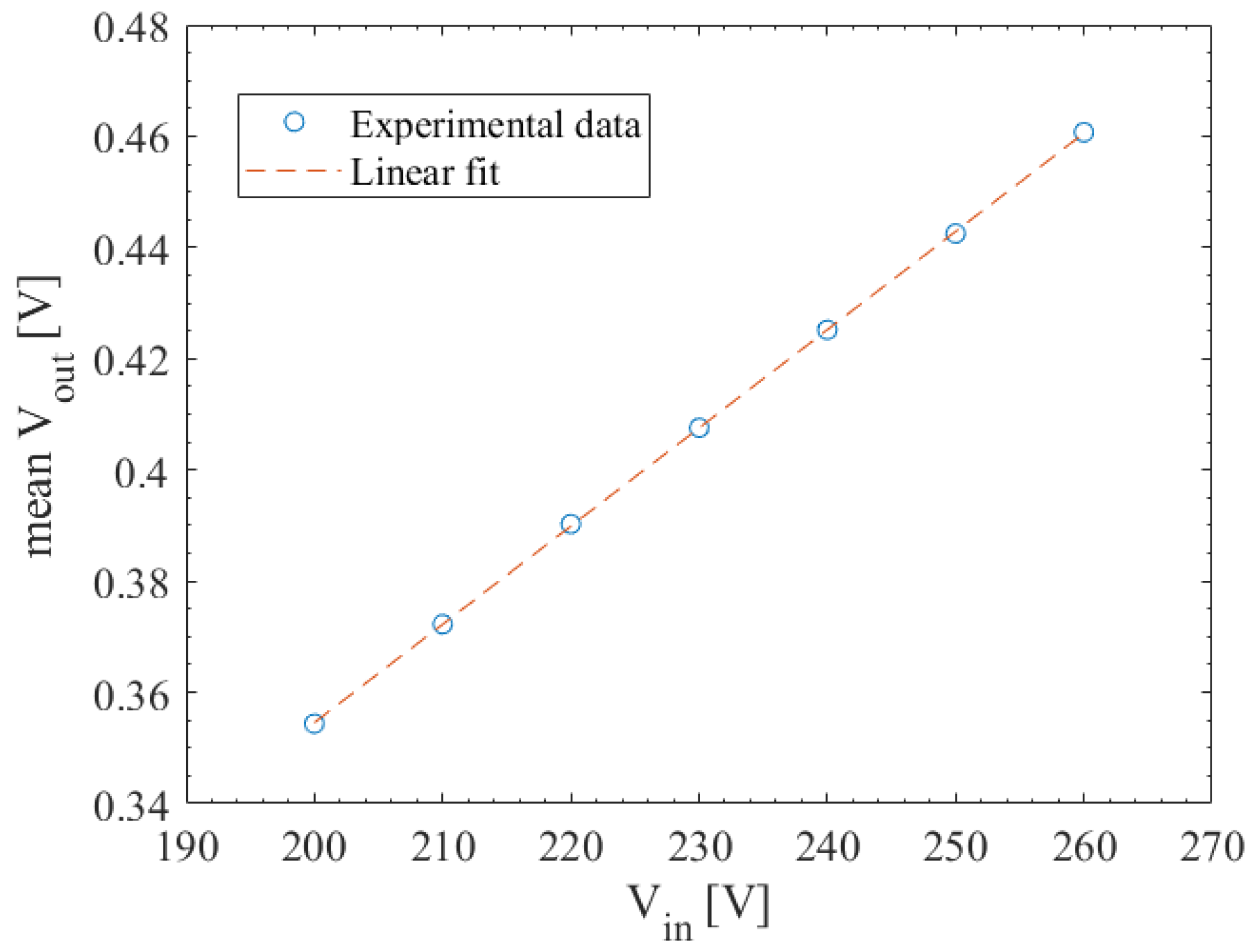
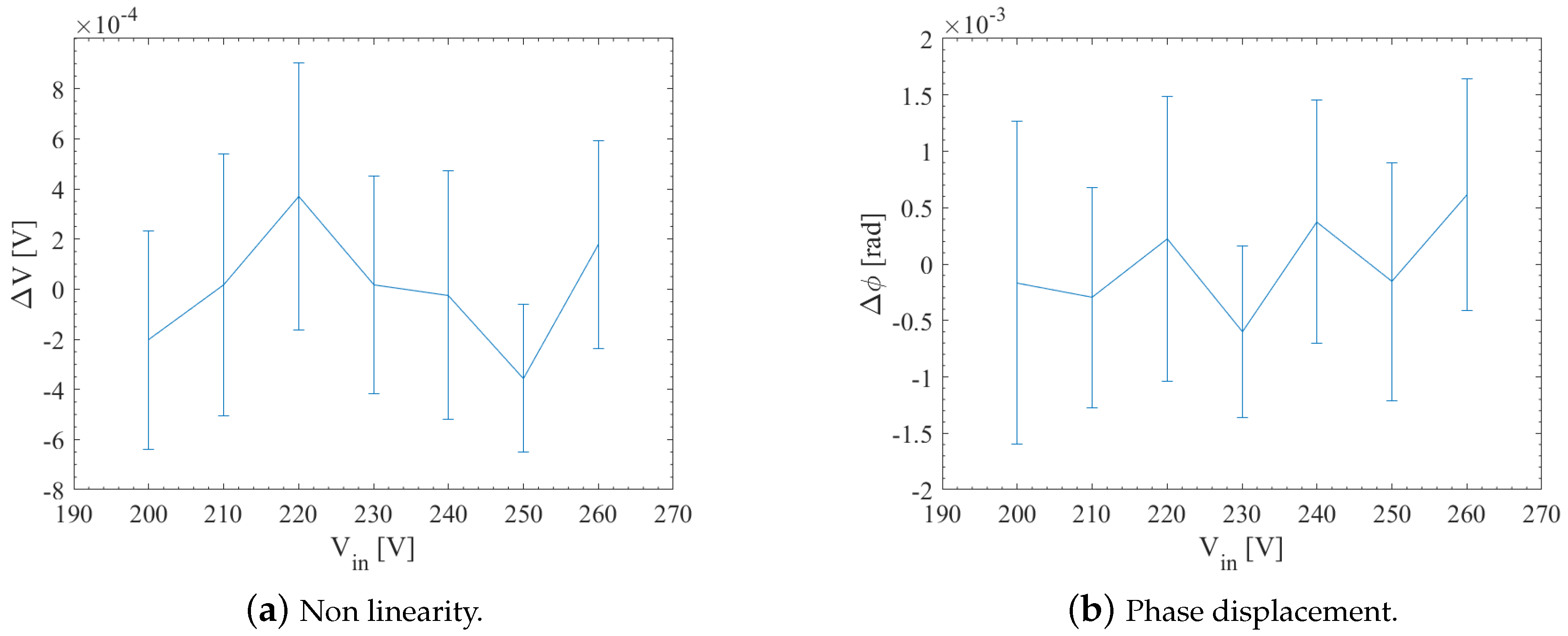

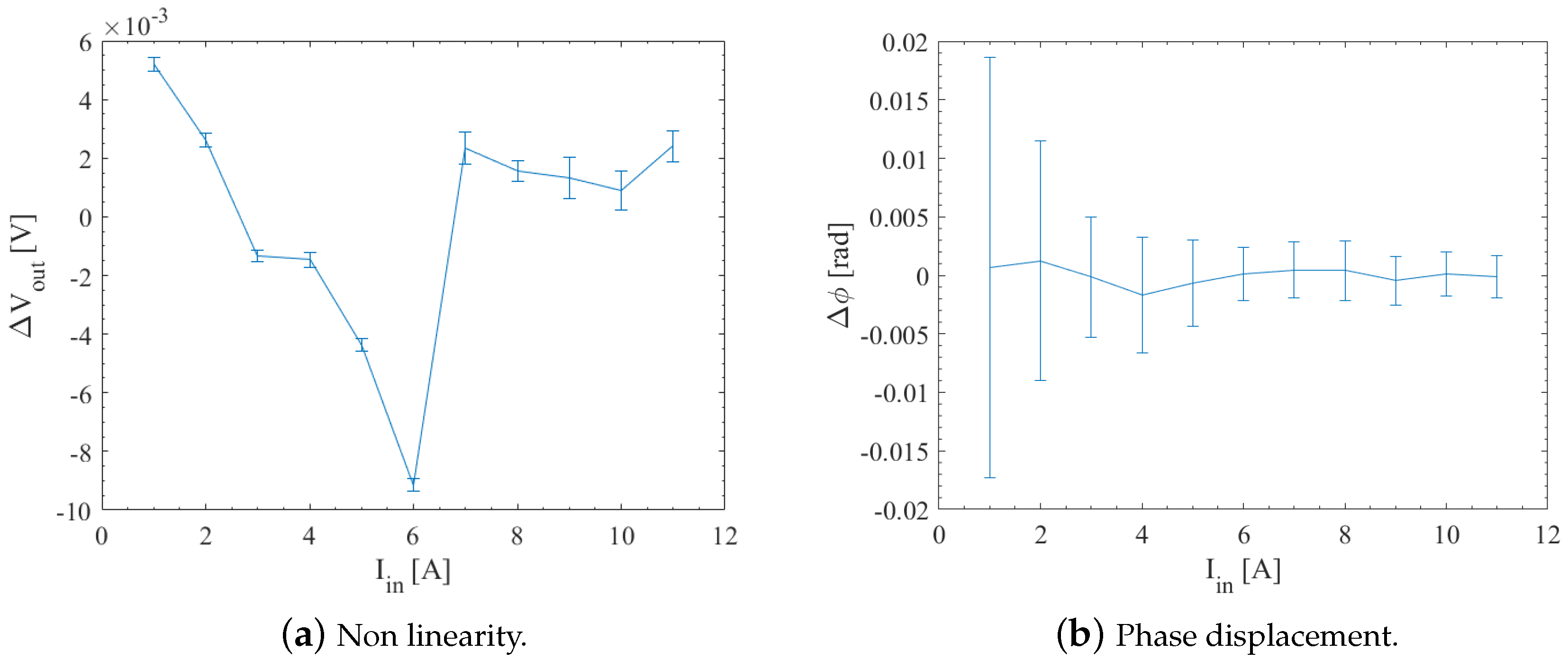
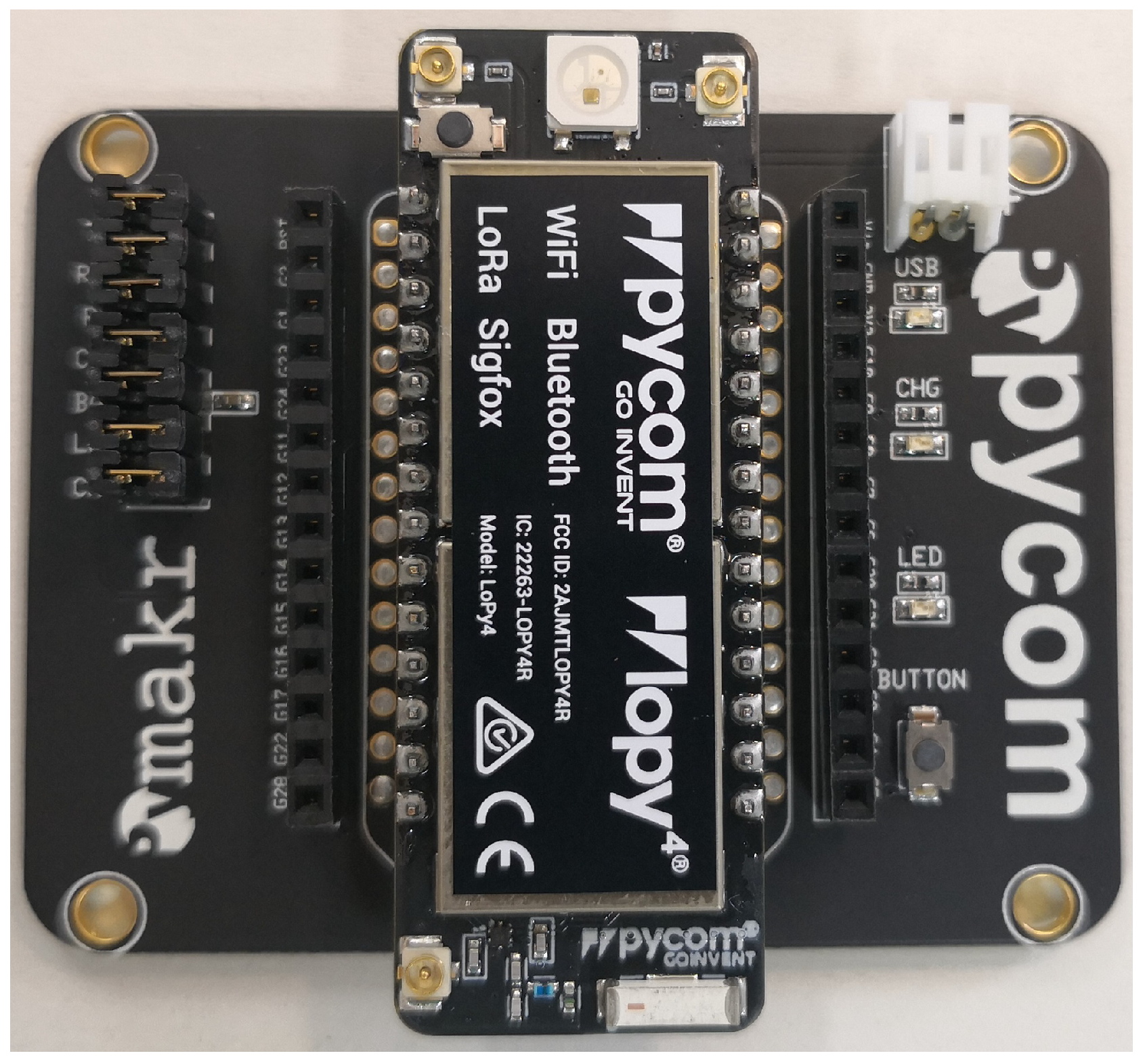
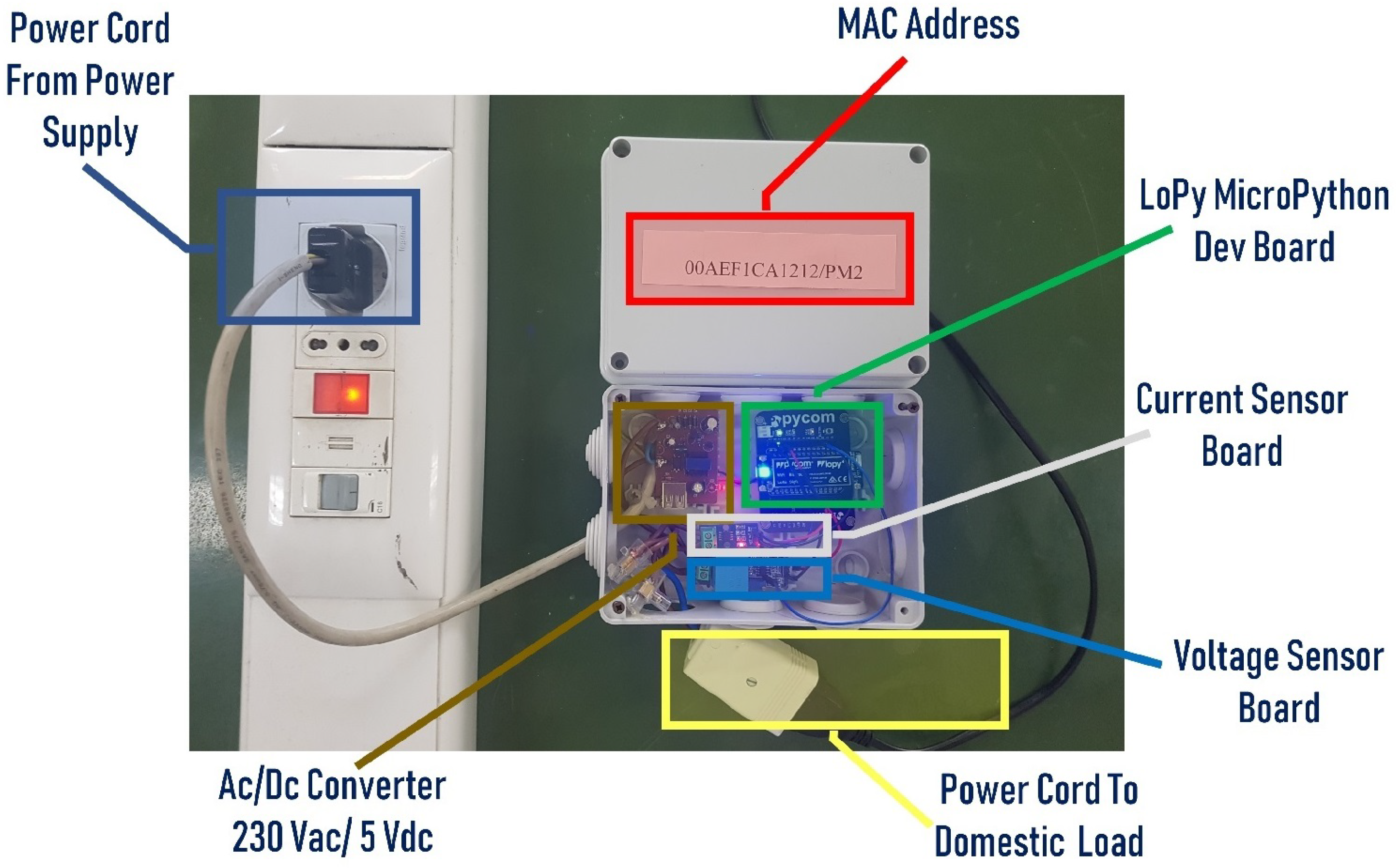

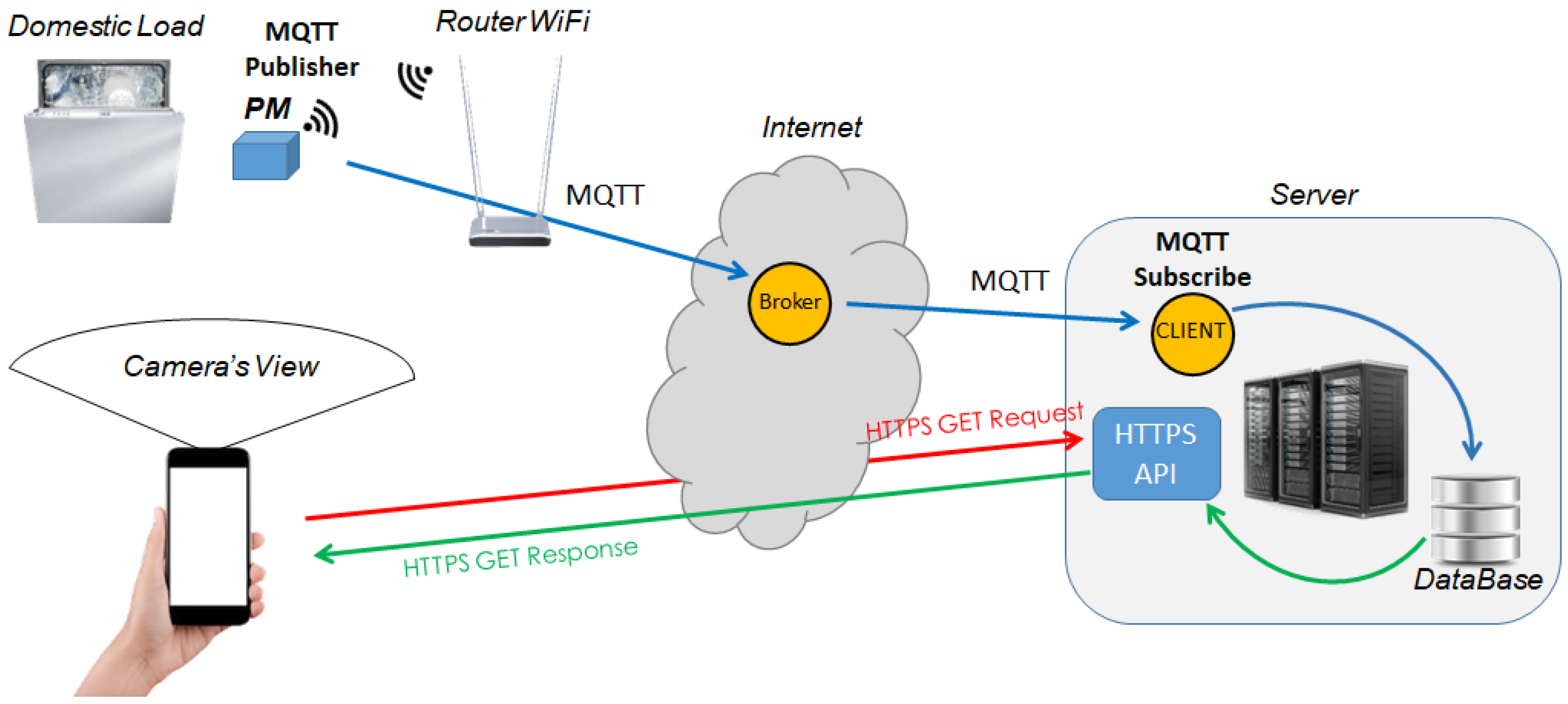
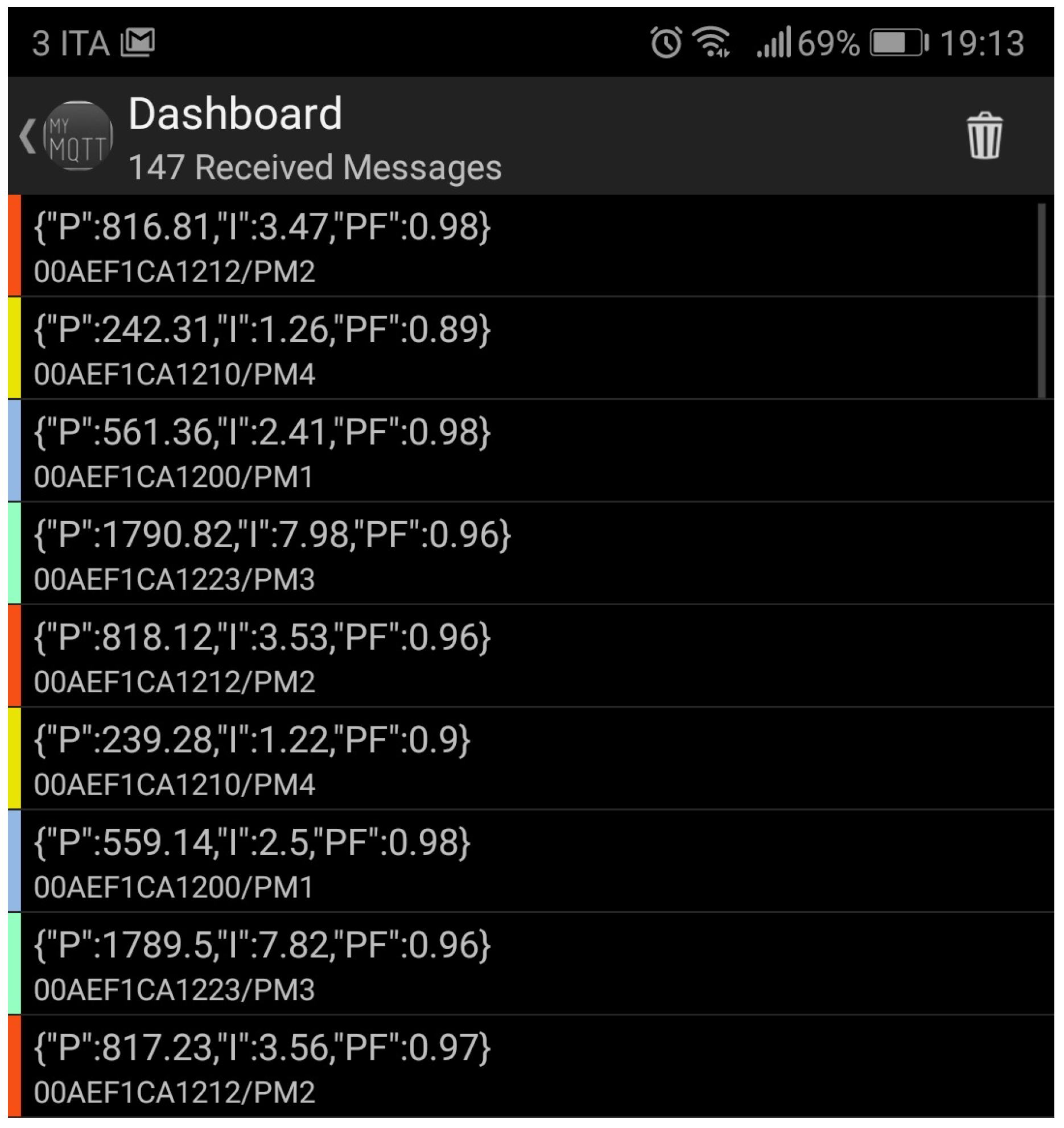
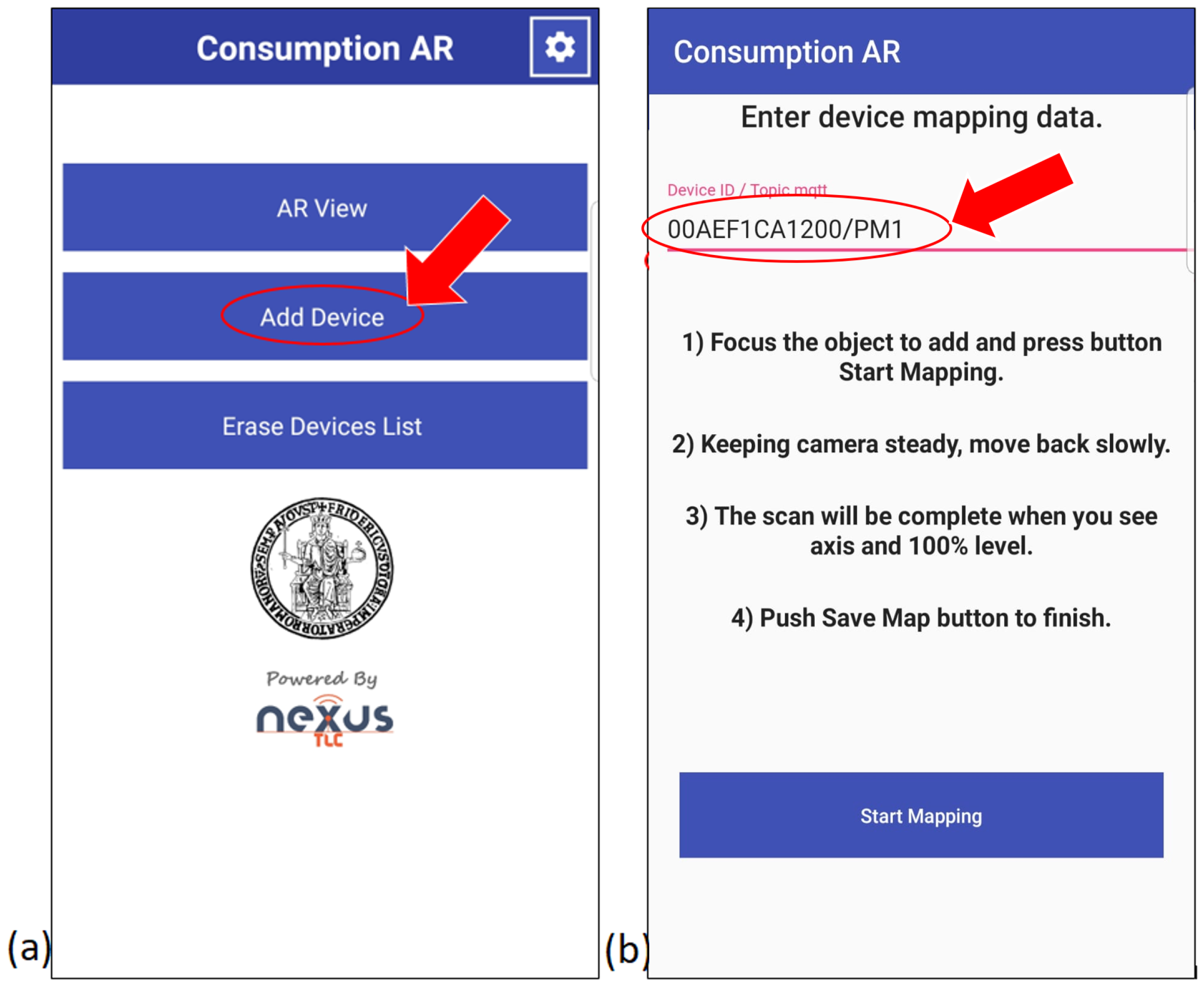
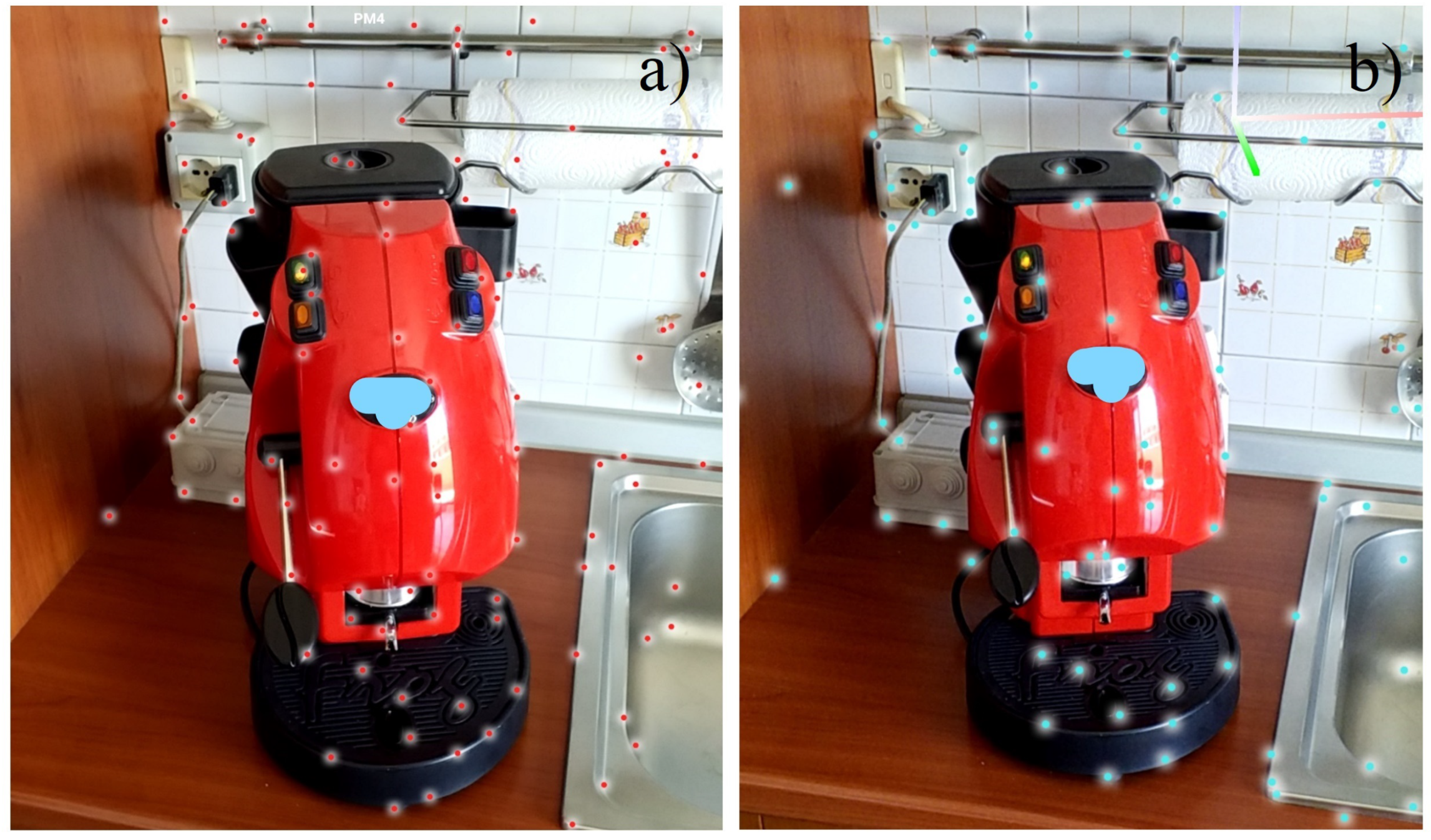
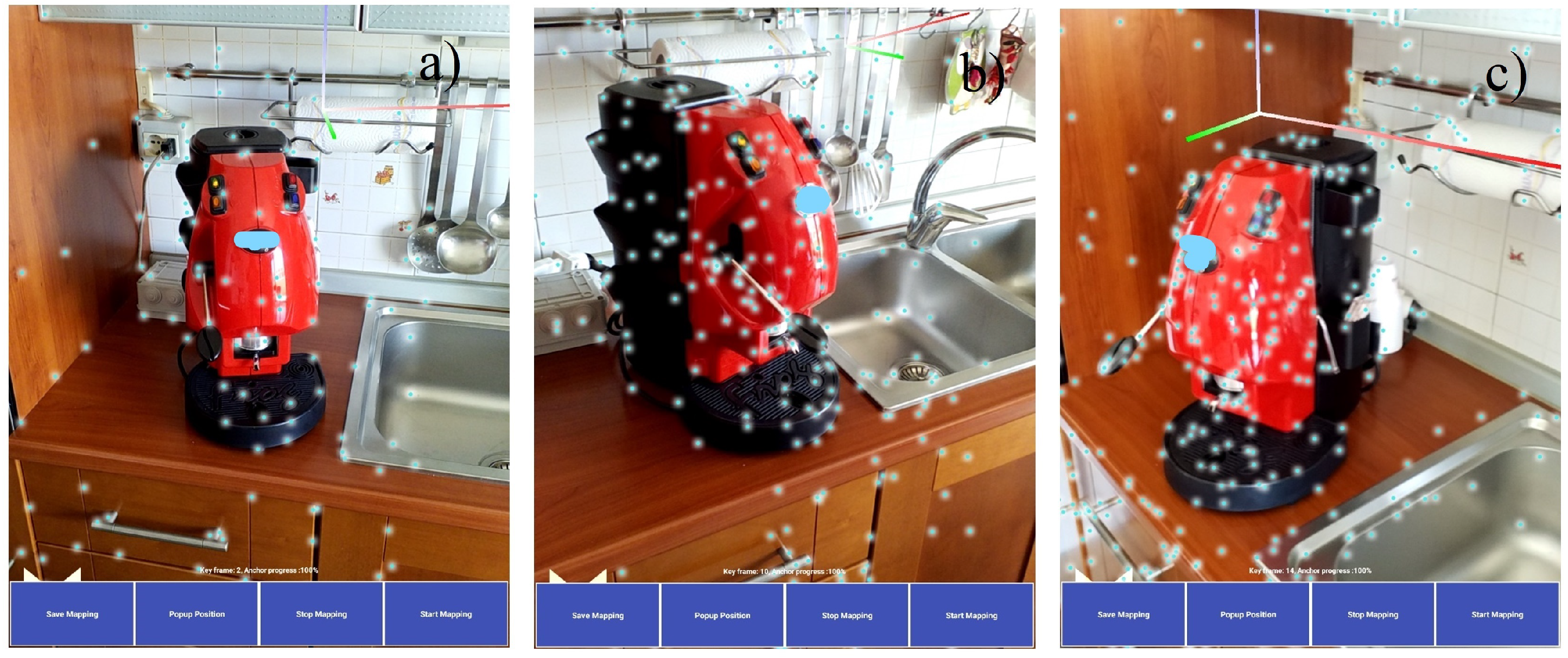
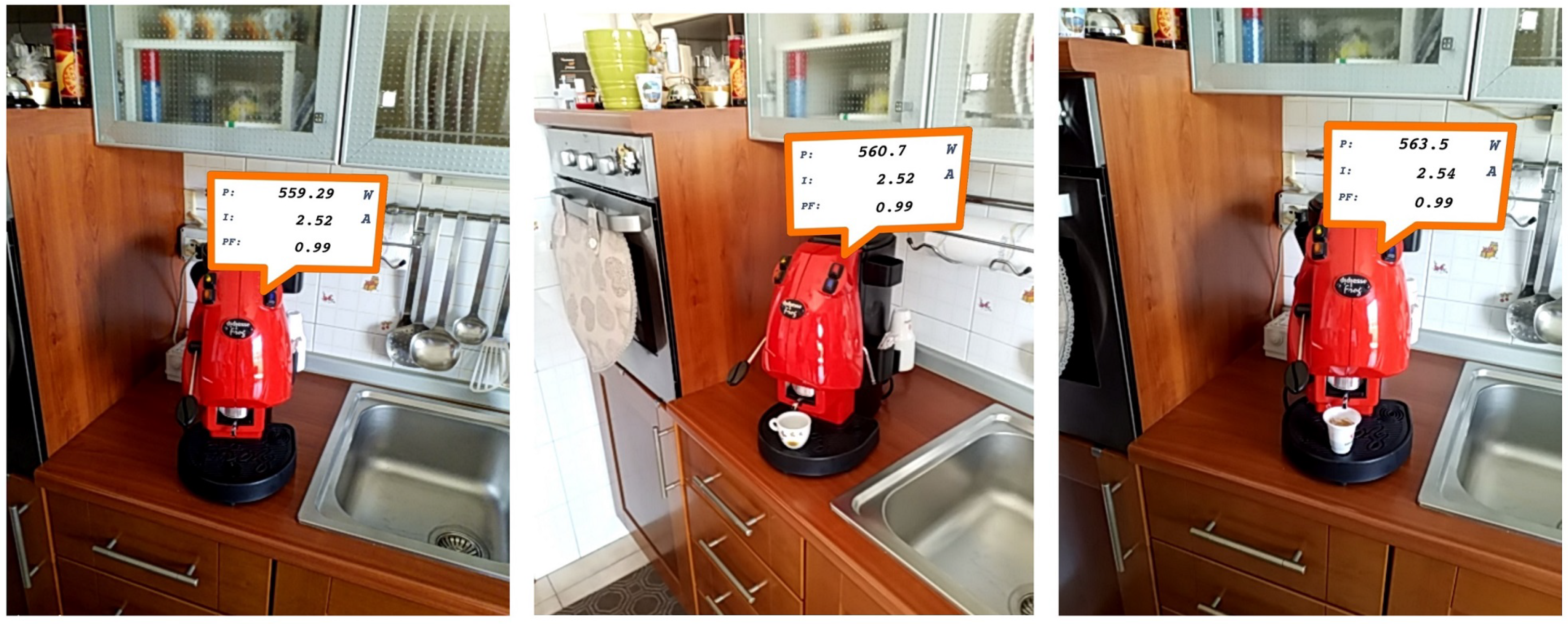
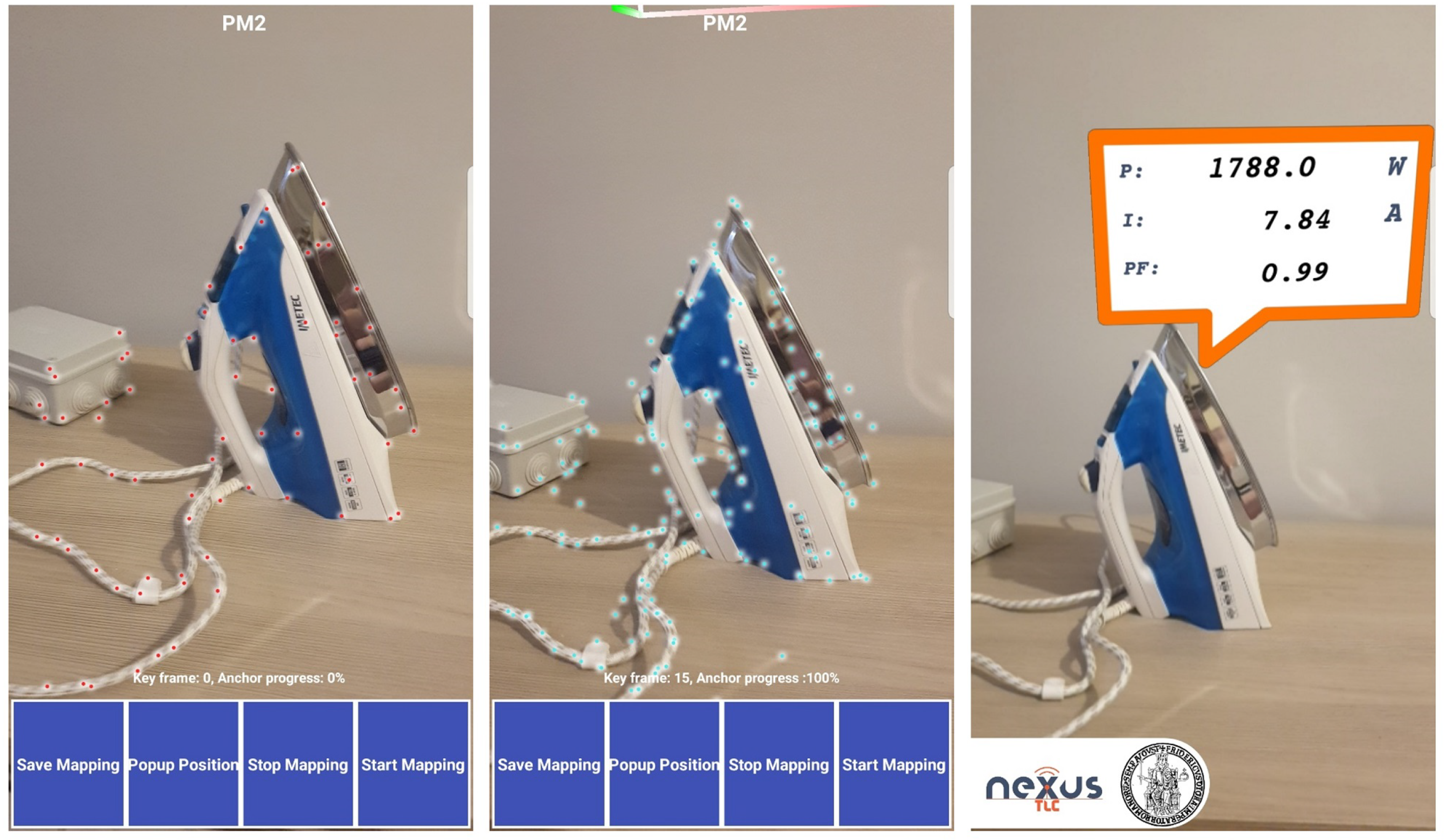
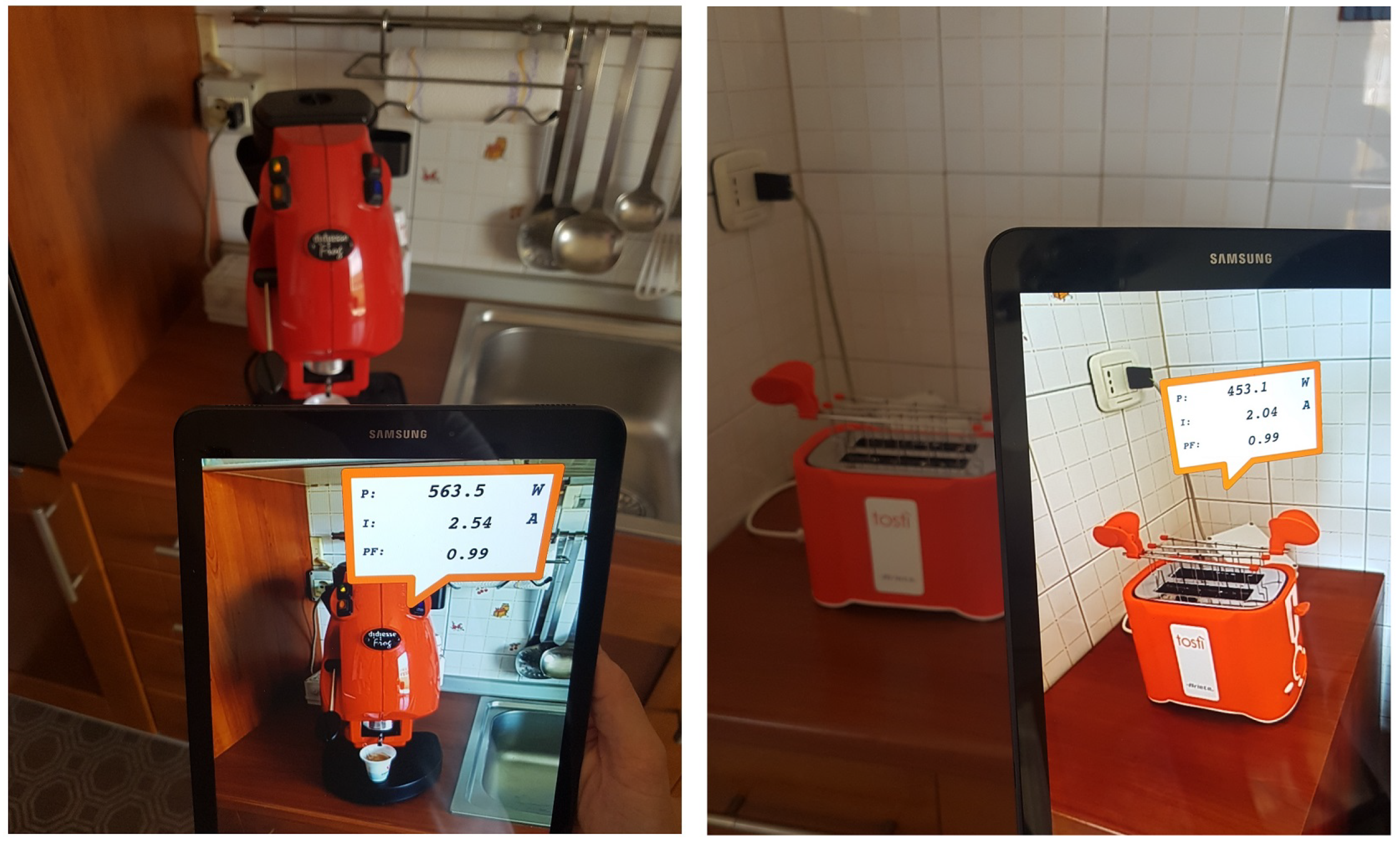
| Input [V] | [mV] | [mV] | [mrad] | [mrad] |
|---|---|---|---|---|
| 200 | 0.6 | 4.5 | 0.3 | 6.9 |
| 210 | −0.7 | 4.5 | 0.7 | 5.6 |
| 220 | −0.1 | 3.3 | 0.9 | 6.1 |
| 230 | 0.8 | 3.9 | 0.1 | 5.4 |
| 240 | 0.5 | 3.8 | −0.7 | 6.5 |
| 250 | 0.9 | 4.2 | −0.7 | 5.5 |
| 260 | 0.3 | 4.4 | −0.4 | 6.0 |
| Input [A] | [mV] | [mV] | [mrad] | [mrad] |
|---|---|---|---|---|
| 1 | 0.7 | 8.3 | 1.1 | 32 |
| 2 | −1.6 | 9.1 | 1.2 | 22 |
| 3 | 0.1 | 8.5 | −0.3 | 15 |
| 4 | 0.1 | 8.0 | −2.8 | 13 |
| 5 | 1.4 | 9.5 | −1.0 | 11 |
| 6 | −0.1 | 8.4 | −0.4 | 8.2 |
| 7 | −0.4 | 8.8 | −1.3 | 6.4 |
| 8 | 0.6 | 9.3 | −1.8 | 7.8 |
| 9 | 0.9 | 8.7 | 1.9 | 7.8 |
| 10 | 0.1 | 9.4 | −0.4 | 4.7 |
| 11 | −0.6 | 8.7 | 2.3 | 5.6 |
© 2018 by the authors. Licensee MDPI, Basel, Switzerland. This article is an open access article distributed under the terms and conditions of the Creative Commons Attribution (CC BY) license (http://creativecommons.org/licenses/by/4.0/).
Share and Cite
Angrisani, L.; Bonavolontà, F.; Liccardo, A.; Schiano Lo Moriello, R.; Serino, F. Smart Power Meters in Augmented Reality Environment for Electricity Consumption Awareness. Energies 2018, 11, 2303. https://doi.org/10.3390/en11092303
Angrisani L, Bonavolontà F, Liccardo A, Schiano Lo Moriello R, Serino F. Smart Power Meters in Augmented Reality Environment for Electricity Consumption Awareness. Energies. 2018; 11(9):2303. https://doi.org/10.3390/en11092303
Chicago/Turabian StyleAngrisani, Leopoldo, Francesco Bonavolontà, Annalisa Liccardo, Rosario Schiano Lo Moriello, and Francesco Serino. 2018. "Smart Power Meters in Augmented Reality Environment for Electricity Consumption Awareness" Energies 11, no. 9: 2303. https://doi.org/10.3390/en11092303





